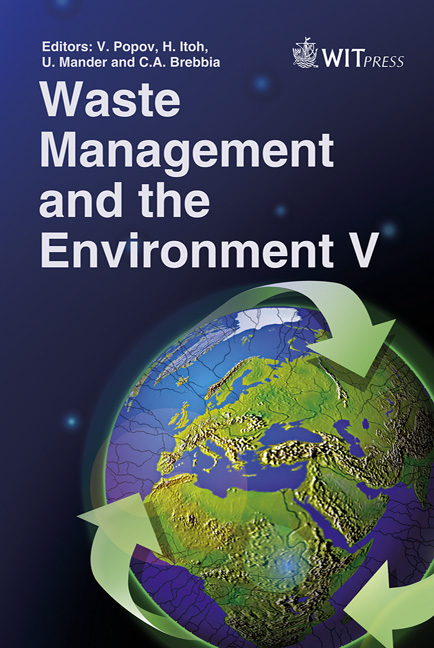Toxicity Evaluation Of MSW Leachate Using Oncorhynchus Mykiss And Gambusia Affinis Acute Toxicity Tests In Kermanshah, Western Iran
Price
Free (open access)
Transaction
Volume
140
Pages
9
Page Range
225 - 233
Published
2010
Size
1,924 kb
Paper DOI
10.2495/WM100211
Copyright
WIT Press
Author(s)
M. Sharifi, L. Heydarian, A. Roshani, F. Yavari & S. Dezfoulinezhad
Abstract
Various physical, chemical and biological characteristics of Kermanshah municipal solid-waste leachate including COD, BOD, EC, pH, T, TSS, TDS, NO3 --N and PO4 -3-P were determined. Laboratory analysis revealed that samples collected in November-January when precipitation is on its peak are highly polluted with very high TSS (9398.8 mg L-1), BOD (2630 mg L-1) and COD (6240 mg L-1), NO3 --N (4100 mg L-1), PO4 -3-P (62.4 mg L-1). The toxicity of leachate produced at the Kermanshah municipal solid waste dump was determined using the 96-h acute toxicity test with Oncorhynchus mykiss and Gambusia Affinis. Result of toxicity assay indicates that the leachates were highly toxic to Oncorhynchus mykiss (LC50=6.07% v/v) and Gambusia affinis (LC50=12.41% v/v). Keywords: leachate, toxicity test, Oncorhynchus mykiss, Gambusia affini. 1 Introduction Leachate created by municipal solid waste is a highly complex mixture of organic and inorganic compounds [1]. Using acute and chronic toxicity tests with various animals and plants several studies have shown that leachates produced by municipal solid wastes are highly toxic [2]. Although unpredictability of interactions between components of the leachate poses difficulties in the
Keywords
leachate, toxicity test, Oncorhynchus mykiss, Gambusia affini





